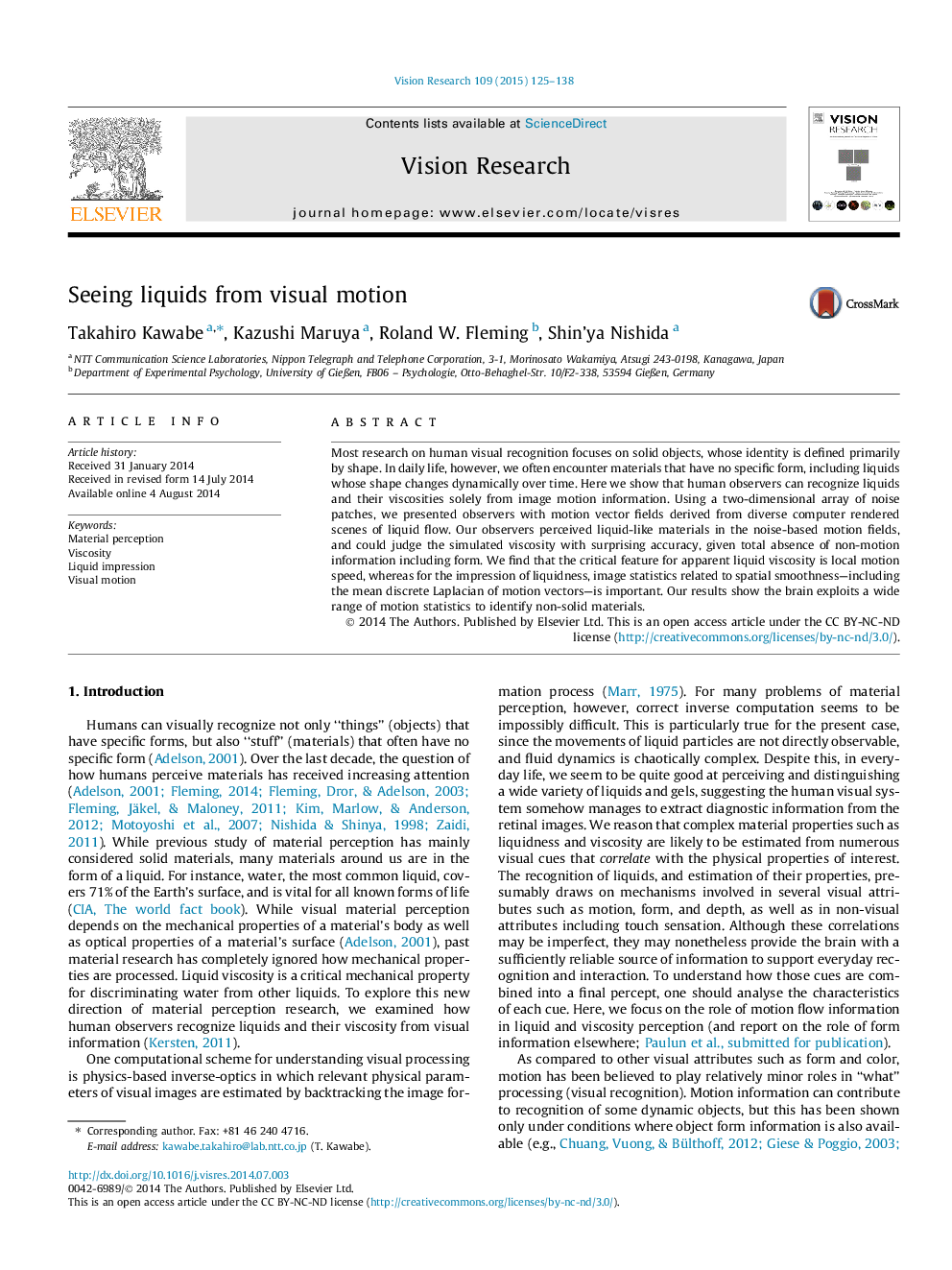| Article ID | Journal | Published Year | Pages | File Type |
|---|---|---|---|---|
| 6203202 | Vision Research | 2015 | 14 Pages |
â¢Human observers can recognize liquids and their viscosity from only image motion.â¢The visual system exploits various motion statistics to perceive liquids.â¢Local motion speed is a critical image feature for liquid viscosity.â¢Spatial smoothness of optical flow is a critical image feature for seeing liquids.
Most research on human visual recognition focuses on solid objects, whose identity is defined primarily by shape. In daily life, however, we often encounter materials that have no specific form, including liquids whose shape changes dynamically over time. Here we show that human observers can recognize liquids and their viscosities solely from image motion information. Using a two-dimensional array of noise patches, we presented observers with motion vector fields derived from diverse computer rendered scenes of liquid flow. Our observers perceived liquid-like materials in the noise-based motion fields, and could judge the simulated viscosity with surprising accuracy, given total absence of non-motion information including form. We find that the critical feature for apparent liquid viscosity is local motion speed, whereas for the impression of liquidness, image statistics related to spatial smoothness-including the mean discrete Laplacian of motion vectors-is important. Our results show the brain exploits a wide range of motion statistics to identify non-solid materials.
